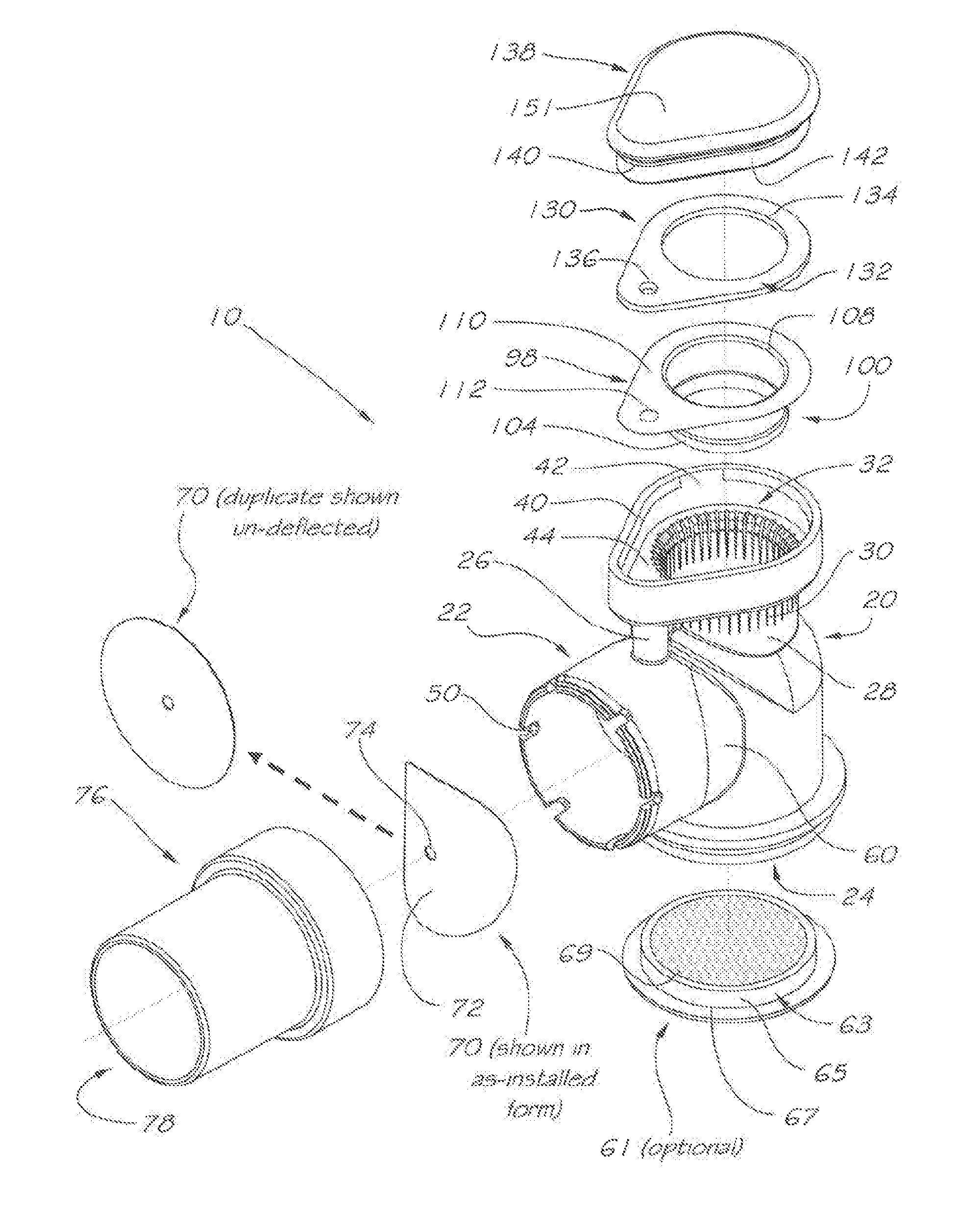Respiratory valve apparatus
a technology of respiratory valve and valve body, which is applied in the direction of breathing mask, breathing protection, other medical devices, etc., can solve the problems of insufficient efficacy of stale expired gas venting from the user's respiratory system, user's risk of re-breathing a substantial proportion of expired air and asphyxiation, and prior art exhibits further inherent limitations
- Summary
- Abstract
- Description
- Claims
- Application Information
AI Technical Summary
Benefits of technology
Problems solved by technology
Method used
Image
Examples
Embodiment Construction
[0064]A first embodiment of a respiratory valve apparatus according to a first aspect of the present invention is shown in FIGS. 1 to 7. FIG. 1 shows the apparatus 10 in use in a system for providing respiratory therapy. Apparatus 10 is coupled or sealably secured to a mask or user interface 12 covering the nose of a user, and is fed with a pressurised flow of breathable gas from a pressure source comprising gas flow generator 14 and delivery tube 16, whereby breathable gas is delivered to the airway of the user.
[0065]It will be appreciated by those skilled in the art that although a nasal user interface is depicted here, alternatives such as an oronasal, oral appliance tracheostomy or endotracheal tube may also be applicable.
[0066]The user may be an individual undergoing respiratory therapy, and the breathable gas may be enriched with a therapeutic gas, such as oxygen, or include a therapeutic agent, and be in a variety of forms, such as a nebulized mist, powder or gas.
[0067]FIG. 2...
PUM
 Login to View More
Login to View More Abstract
Description
Claims
Application Information
 Login to View More
Login to View More - R&D
- Intellectual Property
- Life Sciences
- Materials
- Tech Scout
- Unparalleled Data Quality
- Higher Quality Content
- 60% Fewer Hallucinations
Browse by: Latest US Patents, China's latest patents, Technical Efficacy Thesaurus, Application Domain, Technology Topic, Popular Technical Reports.
© 2025 PatSnap. All rights reserved.Legal|Privacy policy|Modern Slavery Act Transparency Statement|Sitemap|About US| Contact US: help@patsnap.com



